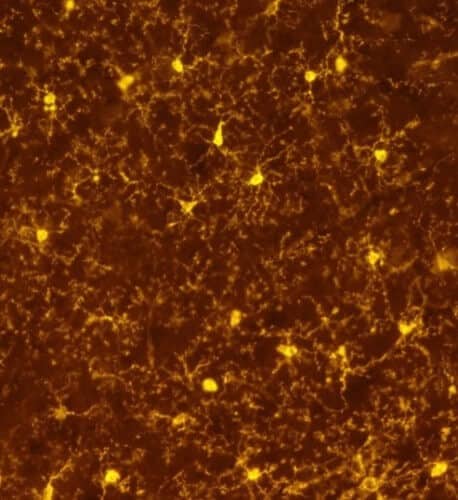Mysterious brain cells begin to reveal some of their secrets

Until recently, neurons received most of the fame in the field of brain research. For more than 100 years, scientists thought that these cells, which transmit electrical signals, are solely responsible for the information processing process that makes the brain such a powerful machine. In contrast, the cells called "glia cells" (glia), which occupy about half of the volume of the brain, were considered as a total "filler material" that supports the nerve cells and protects them, but does not perform any vital function of its own. In fact, these cells got their name, which means "glue" in Greek, precisely because they were considered to be unsophisticated cells, whose entire function was to support the nerve cells. But in recent years it has become clear that the glial cells - and especially the tiny microglial cells, which make up about a tenth of the brain cells - have extremely important roles in both the healthy brain and the sick brain.
The microglia are octopus-like immune cells that perform ongoing maintenance work, such as ingesting the remains of dead cells, and protecting the brain from injury or infection as a result of invading bacteria and viruses. But these unusual cells are more than just cleaning workers. It was recently discovered that they are involved in shaping networks of nerve cells during embryonic development by pruning synapses - the communication points through which information is transmitted between nerve cells. They are probably also involved in the remodeling of the synapses - a process that occurs in the adult brain during learning processes and the formation of memories. Defects in microglia probably contribute to various neurological diseases, such as Alzheimer's and ALS. If scientists understand exactly how microglia work at the molecular level, they may be able to develop new drugs for these diseases.
More than a decade ago he developed Prof. Stefan Jung From the Weizmann Institute of Science genetically modified mice, using which scientists were able to observe active microglial cells in a living brain for the first time. Now Prof. Jung took another vital step: His laboratory developed a system for deciphering the mechanisms of activity of the microglial cells.
Prof. Jung and his group injected the mice with a genetic switch: it is an enzyme that rearranges a specific section of a pre-marked DNA molecule. The switch is activated by a chemical component: when the mouse receives the component, a reorganization of the DNA takes place, resulting in a genetic change - for example, the silencing of a certain gene. The switch is designed in such a way that in the long run, it affects only the microglia, and not other cells in the brain or other organs of the body. In this way, the researchers can discover not only the characteristics of the microglial cells, but also the role of genes that activate different mechanisms within them.
As reported in the scientific journal Nature Neuroscience, scientists of the Weizmann Institute of Science, in collaboration with colleagues from the research group of Prof. Marco Prinz from the University of Freiburg in Germany, recently used these mice to examine the role of a gene responsible for the development of inflammation, which is expressed in microglial cells. Their research showed that microglia contribute to the development of muscle atrophy in a murine model simulating multiple sclerosis in humans. Prof. Jung's group included Yohai Wolf, Diana Verol and Dr. Simon Yona from the Department of Immunology at the Weizmann Institute of Science.
The new system developed at the Weizmann Institute of Science is now used by several groups of scientists at the institute and around the world, with the aim of shedding light on the role of microglial cells in the healthy brain, as well as in diseases such as Alzheimer's and ALS.

3 תגובות
Also treasurers of acquired knowledge?!
https://www.youtube.com/watch?v=Jp2HGFySBpc